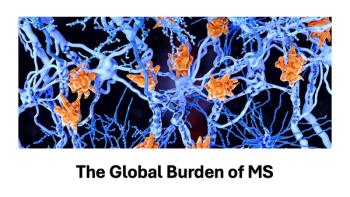
IPF drug to be tested with add-on therapy
Boehringer Ingelheim recently began a clinical trial to assess the safety and tolerability of adding on pirfenidone to Ofev (nintedanib) for idiopathic pulmonary fibrosis patients.
Boehringer Ingelheim recently began a clinical trial to assess the safety and tolerability of adding on pirfenidone to nintedanib (Ofev) for idiopathic pulmonary fibrosis (IPF) patients. The 12-week study’s will determine the percentage of patients with gastrointestinal (GI) adverse events from baseline to week 12, since the most frequent adverse events for both products are of gastrointestinal nature.
“We are initiating this trial to ensure that we provide the scientific community with important information regarding Ofev combination therapy. This trial is part of our continued commitment to tackling the global burden of progressive fibrotic lung diseases,” said Christopher Corsico, MD, corporate senior vice president-Medicine and chief medical officer at
Boehringer Ingelheim is testing the combination therapy, after the international evidence-based guideline for IPF were updated in July, 2015.
Related:
“With the publication…[of the guideline for IPF], we now have conditional recommendations for the use of two approved treatment options for patients with IPF: nintedanib and pirfenidone,” said Carlo Vancheri with the Regional Centre for Rare Lung Diseases, Catania, Italy. “However, there has been limited evidence to date to establish the safety of combining these treatments. This new trial will provide essential information regarding the safety of adding pirfenidone to core treatment with nintedanib, and could help guide future therapy decisions in IPF.”
Plus, recently-published phase 3 clinical trials showed that treatment with Ofev has similar and consistent effects on disease progression (as measured by annual rate of forced vital capacity [FVC] decline) and the amount of time to the first acute exacerbation-regardless of whether people with IPF enrolled in the trials in the United States or internationally.
Related:
Researchers found that the annual rate of decline in FVC in US patients was −94.7 mL/year with Ofev and −242.5 mL/year with placebo, while in non-US patients it was −117.0 mL/year with Ofev and −220.0 mL/year with placebo. The hazard ratio for time to first acute exacerbation was 0.37 in US patients and 0.68 in non-US patients, both in favor of Ofev.
Meanwhile, the new add-on therapy trial will enroll approximately 100 patients with confirmed IPF from 25 study centers in the USA, Canada, Italy, Germany, France and the Netherlands.
In addition to testing GI events, researchers will assess the amount of Ofev and pirfenidone circulating in the blood, to assess if pirfenidone interacts with Ofev and influences the amount found in the blood.
Read next:
Newsletter
Get the latest industry news, event updates, and more from Managed healthcare Executive.






















































